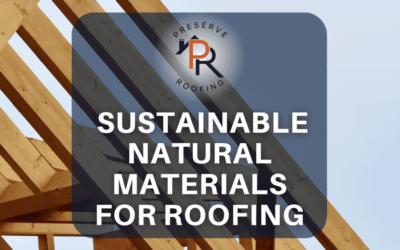Spring is here, and with it comes the urge to get out into the yard and start cleaning up. But don’t forget about your roof — you’ll want to put on your safety gear and get started on undoing all the damage that winter has caused.
So let’s look at everything you need to do to check your roof for damages, repair them and prepare them for spring.
Spring roof maintenance: 8 things to do to keep your roof in good shape
- Check the shingles for any damages
- The first step in roof care is to check the shingles, their condition and any possible damage. Look for cracked, damaged or missing shingles, and replace them immediately, if you find any, before they deteriorate further and cause more damage.
- Remove debris from the gutters
- During winter, there is an increased risk of ice dams forming on your roof. This happens when the snow melts on top of your roof, refreezes near the edge of your gutter and causes the water to back up. Leaves, dirt, and other debris can accumulate over time, leading to waterlogging.
- If you only have dry leaves accumulated in the gutters, using a leaf blower is the easiest way to clean them out. If you have heavy debris like wet leaves, twigs, dirt and other big physical objects blocking the flow, you can use a rake to clean them out thoroughly. Make sure not to use high-pressure water hoses to clean the gutters, as you can end up pushing them further down the clog.
- Inspect the flashing and caulking
- Since flashings connect the roof to your home structure, damage to the flashing can lead to severe problems in the future. Take a look at all your flashings for signs of rust formation. You should also check the caulking for cracks or holes that could allow water to leak into your home. If you find any cracks or holes, you need to repair them immediately.
- Similarly, check the vents and the skylights for signs of cracks. These are areas where water can leak into your home, so inspect them for cracks or breaks that may be allowing moisture inside.
- Prune your trees
- If you have a large tree overhanging your roof and dropping leaves and debris, it could be the main cause of leaks. Also, the tree branches can easily block sunlight from reaching your roof leading to algae and mold growth, further deteriorating your roof.
- So make sure to remove dead limbs, trim branches that hang close to the roof and cut back the overhangings so they don’t block gutters or vents.
- Remove any algae or mold build-up
- With winter just behind us, there are high chances of algae and mold growth under the roof shingles in the warm and moist areas. These organisms can cause severe damage over time if left unchecked, so it’s essential to check for them regularly.
- If you find algae, mold or mildew on your roof, use a cleaning liquid and a brush to scrub them off thoroughly. If you aren’t able to, it’s always best to get professional help.
- Check for water leakages
- You might not realize it, but there are many ways in which water can enter your home through the roof without causing any visible damage on the outside. This is especially true for older homes with hidden leaks under layers of paint or insulation in attics or basements.
- Some leaks can go undetected because they don’t always show up until they reach a certain level of severity. This could mean serious damage inside your home before anyone realizes what’s happening!
- Look for any water stains or discolorations in the attic; this could mean your roof needs repair.
- Maintain proper drainage on your roof
- Your roof should have good drainage installed, so that excess water does not pool up on top of it during rainfall or storm. If you haven’t already, then you need to get this done before the next wet season arrives.
- Conduct an internal inspection
- An internal inspection of your roof will help identify problems with leaks or other issues that may lead to leaks. Make sure to look under the roof for signs of leaks under the roof and in the insulation. Also, inspect your attic for signs of dampness, wet spots on walls or ceilings, and mold growth — all of which are signs of issues in the roof.
- Consider hiring a professional contractor for this inspection, especially if you have never done one before. In addition, this type of inspection might help identify structural problems that may not be visible outside the home but are still causing damage inside.
Schedule a professional inspection
Don’t have the time or energy to properly inspect, repair and maintain your roof?
Schedule an inspection with one of our experts at Preserve Roofing.
We can help you identify any potential problems with your roof so you can make any necessary repairs before they become more expensive down the road.
Our team will carefully check your roof to ensure that there are no leaks, missing shingles or other damage. We’ll also examine your gutters to ensure they’re clean and debris-free.
If we find that your roof needs repairs or maintenance, we’ll discuss our findings with you and let you know what options are available — like simply replacing some damaged shingles or sealing any cracks in the fascia board.
Not sure how much it’ll cost you?
Call us at 678-956-5152 to get a free estimate.


